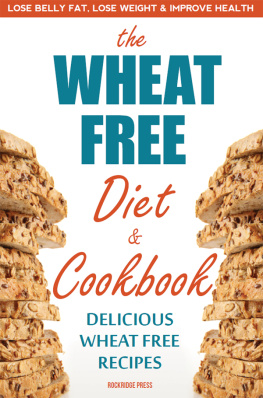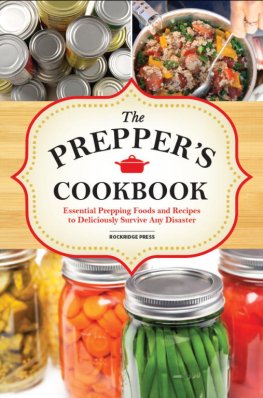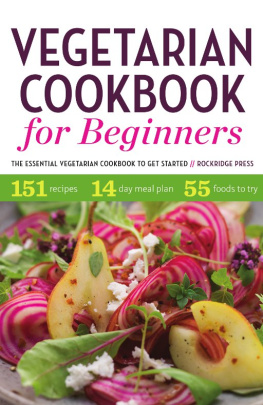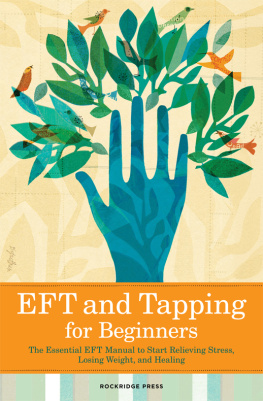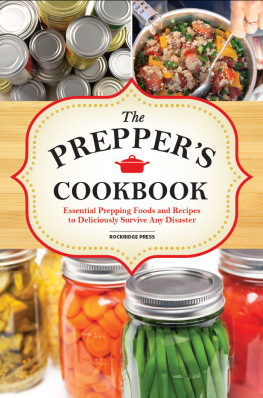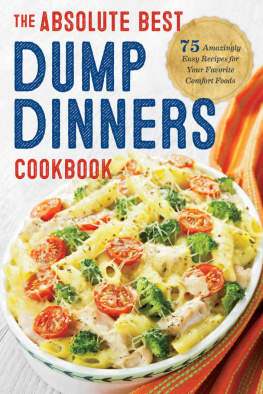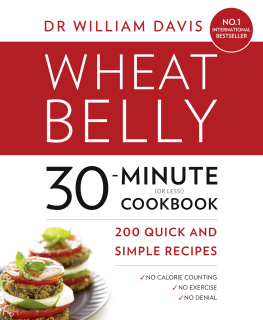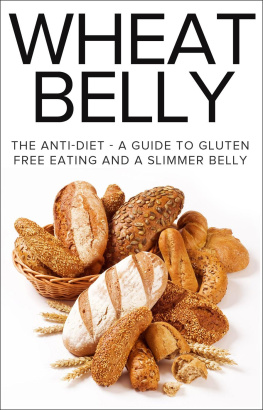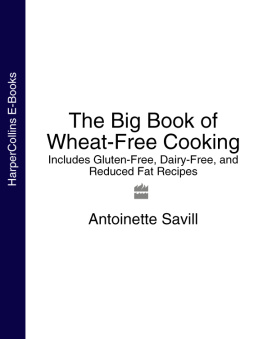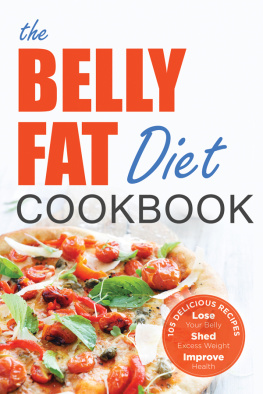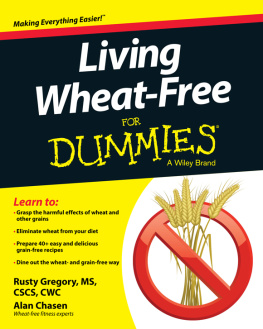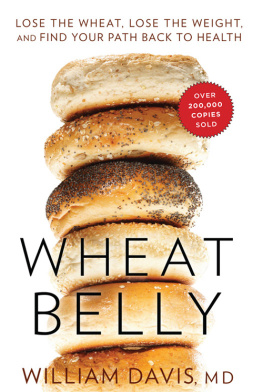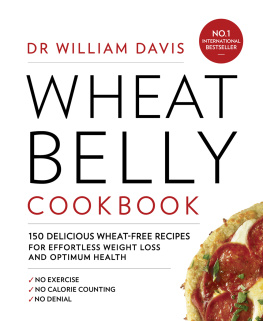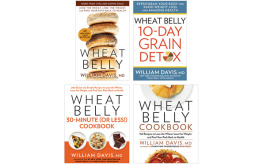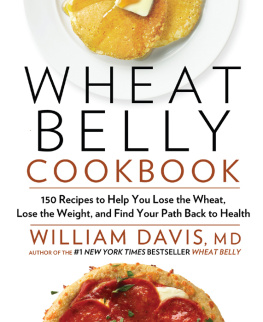INTRODUCTION
F or years, weve been told that including grains in our diet was essential for good health. In the last two decades or so, Americans have been admonished to include as many grains in their diets as possible, especially whole grains. Since wheat is the most common grain in the American diet, it follows that most of those whole-grain foods would contain wheat.
This should be a good thing; but perhaps it isnt.
Research from more than one scientific circle indicates that our consumption of wheat is directly responsible for several conditions and diseases in the United States, including type 2 diabetes, obesity, high blood pressure, insulin resistance, arterial disease, and many others. This is in addition to the problems associated with celiac disease, a condition that damages the lining of the small intestine due to a sensitivity to gluten, which is a protein composite found in wheat and other related grains.
In the 1970s, Dr. Robert Atkins released Dr. Atkins Diet Revolution, the first of several books warning of the effects of a high-carbohydrate diet. His and other low-carb diets advised that flour-based foods such as bread and pasta were too large a part of the American diet and could be blamed for much of the obesity Americans were facing. While the original Atkins diet has been revised several times, the low-carb movement has gained respect and credibility.
Just a few years ago, the Paleo diet generated a great deal of attention with the premise that humans were not actually designed to consume grains; that our digestive systems had not adapted to eating them and our consumption of them was making us overweight and ill.
More recently, William Davis, MD, a cardiologist, released his book, Wheat Belly: Lose the Wheat, Lose the Weight, and Find Your Path Back to Health, in which he shared his own research. What Dr. Davis revealed was that while humans have adapted somewhat to eating grains, we were able to digest only the grains (in particular, the wheat) that were grown up until the mid-twentieth century. Since that time, he asserts, the wheat grown in the United States has been genetically modified so much that our bodies havent had time to adapt to it. Not only that, but he explains that those modifications have resulted in a wheat product that is unsafe for us to eat. (Davis 2011)
The scientists behind the Paleo diet, Dr. Davis, and many other researchers agree that removing wheat from our diets can prevent or reverse many of the health problems that have become nearly epidemic in America.
Going on a wheat-free diet may seem impossible; however, doing so can mean living a longer, healthier, leaner life. Plus, wheat-free doesnt mean taste-free! You dont have to give up your favorite foods, such as pastas, breads, cereals, cookies, cakes, and many others. There are great recipes, such as the ones in this book, that replace the wheat without giving up on the taste and the texture. And once youve been on the wheat-free diet for a few weeks, the results, along with the wonderful foods that you are eating, will more than make up for the loss of wheat.

WHEAT: THE GOOD, THE BAD, AND THE UGLY
I ts not enough to say that wheat is bad for you and you shouldnt eat it, especially when wheat-based products make up such a large part of the American diet. Its important to know exactly what wheat is, how it came to be so important in the human diet, and how eating it affects our bodies and our health.
Making good nutritional decisions and healthful changes requires knowledge. Too often, fad diets advise people to cut out whole groups of foods in an effort to lose weight, while brushing over the fact that those foods provide important nutrients.
The wheat-free diet isnt just about losing weight; its also about improving your current health and preventing future problems, such as heart disease and diabetes. Therefore, its important to understand the science behind the wheat-free diet, rather than simply rushing into a wheat-free lifestyle in the hopes of dropping the pounds. Most people will lose weight on the diet as a result of cutting many unhealthful foods from their menus, but this weight loss should be seen as a wonder ful bonus of the diet, not the main focus.
What Is Wheat?
The crop that we know as wheat is a cereal grain that originally grew wild as a plant similar to grasses. The part that we eat is at the top of the plant and is known as the grain. The whole grain is milled to separate the endosperm, bran, and germ. The stem or stalk (what we know as straw) is inedible.
The endosperm alone is ground to make white flour, while the bran and germ are reserved for other uses. In whole-grain flour, the wheat has been ground with the bran and germ intact.
There are several different species of wheat cultivated today. Some of the more common types are semolina, durum, and soft and hard winter wheat. They differ in the amount of protein and gluten they contain, and some are preferred over others for specific uses.
Not Bread Alone
When most people think of wheat, they think of bread. Breads are one of the most common products made with wheat; however, a vast number of foods contain wheat flour. Most pasta is made from wheat, as are many cereals. Even cereals that dont contain wheat as a main ingredient still use wheat as filler.
Wheat is also used in products that, on the surface, seem to have nothing to do with flour or grain. Flavored coffees, for instance, usually contain a derivative of wheat. So do some herbal teas. Many types of vodka are distilled from wheat. A huge number of artificial colorings and flavorings are derived from wheat.
DID YOU KNOW? Many people committed to lowering their sugar intake are still eating healthful wheat products such as whole-wheat bread even though one teaspoon of table sugar has a glycemic index of 59, while a slice of whole-wheat bread has a glycemic index of 72!
As you can see, the bread basket is not the only place that you will find wheat, and theres far more of it in your diet than you might think. Even if you dont each much bread, cake, or cereal, your wheat intake is probably quite significant.
If You Are What You Eat, Youd Better Understand Your Food
There are two key arguments against eating wheat. One is that our bodies werent actually designed to eat wheat and havent yet fully adapted to it. The other is that the wheat were eating has changed so drastically over the last fifty years that its dangerous, whether we adapt to eating it or not.
This is why its so important to know how our bodies process and use wheat and to understand how the wheat we eat today differs from the wheat our ancestors consumed. To do that, we need to understand the history of wheat as a food, from ten thousand years ago right up to the twenty-first century.
The History of Wheat
The first documented evidence of human beings using wheat for food involves the Natufians, a semi-nomadic people that lived in the areas now known as Syria, Lebanon, Israel, Iraq, and Jordan. Archeologists have found among the ruins of Natufian homes remains of harvested einkorn wheat (the original wild variety of the grain) as well as harvesting tools.
Wheat is easily self-pollinated, and einkorn wheat eventually bred with other grasses and formed a new variety of wheat called emmer. This variety was one of the most common cultivated for food for several centuries, but it eventually changed as well, through a combination of intentional breeding and self-pollination. What resulted was a variety of wheat known as

